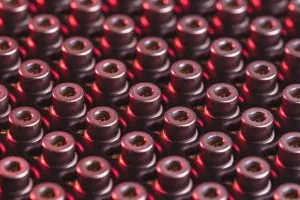Part of its existing Aura range, the speed increase comes from a reduced die size, down to 30µm from 80µm (1.8GHz) or 200µm (700MHz), which drops capacitance to between 0.15 and 0.4pF.
“This makes it ideal for high-speed, time-critical applications, such as those found in gigabit speed optical communications, including free space applications, and OTDR [optical time domain reflectometry] test equipment,” according to the company, which has designed the infra-red sensor diodes for low noise.
Excess noise factor is <3.5 at a gain of 100, and spectral noise current is 260pA/√Hz at a gain of 50 – which is 5.2fW/√Hz at R=1A/W.
The company’s intellectual property includes the addition of an antimony alloy to the compound semiconductor manufacturing process, and resulting devices are said to operate with internal gain of up to 120 with low noise.
Damage threshold is 30MW/cm2, and operation is up to +85°C “with minimal performance degradation”, said Phlux,continuing: “The damage threshold, combined with fast recovery characteristics that minimise attenuation and event dead zones, deliver performance in OTDR and fiber sensing applications. “High optical dynamic range and the ability to operate across a wide range of pulse widths means that OTDRs can test longer or more lossy fibres.”
They are designed to meet MIL-STD-883, qualified to Telcordia GR-468 and are intended to be drop-in replacements for existing 3 x 3mm surface mount (PX01030-SM) or TO-46 (PX01030-TO) packaged components, with bare die parts due later this year.
A PX01030 data brief is available on this Phlux web page
Founded in 2020 to make low-noise APDs and based in Sheffield, UK, Phlux Technology is a spin-out from the University of Sheffield. It raised ~£4m seed funding in December 2022 and £9m Series A in March this year.

